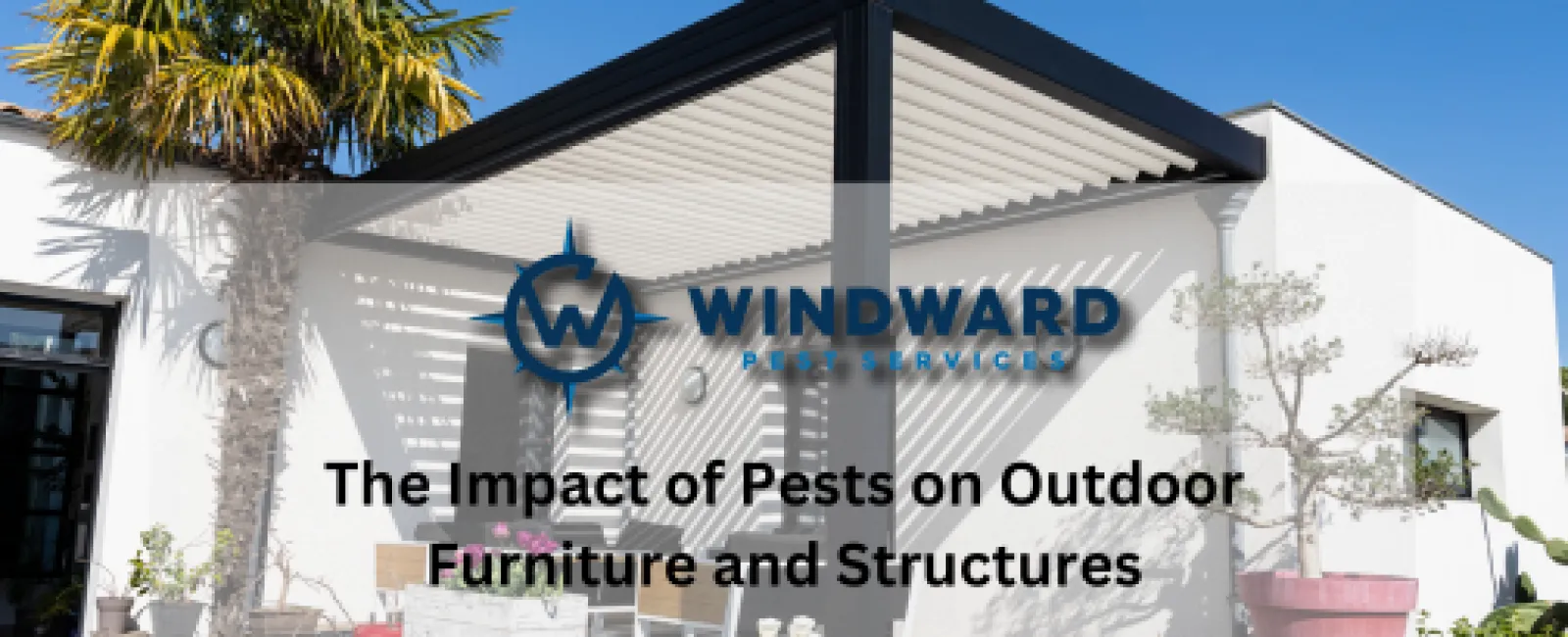Outdoor spaces are an extension of our homes, offering a place to relax, entertain, and enjoy the natural environment. However, these spaces are also vulnerable to a variety of pests that can cause significant damage to outdoor furniture, decks, patios, and other structures. In Georgia, where the warm climate and humidity create ideal conditions for many pests, homeowners need to be especially vigilant in protecting their outdoor investments.
Pests like termites, carpenter ants, and rodents are not just a nuisance; they can cause costly damage to your outdoor furniture and structures if left unchecked. The impact of these pests goes beyond mere aesthetics, as they can weaken the integrity of your outdoor living spaces, leading to expensive repairs and replacements.
Understanding the risks posed by pests and taking proactive measures to protect your outdoor furniture and structures is essential for maintaining a safe and enjoyable outdoor environment. In this article, we'll explore the types of pests that commonly affect outdoor spaces in Georgia and provide detailed information on how to prevent and address the damage they cause. Windward Pest Services, one of the leaders in Atlanta pest control, offers insights and solutions to help you protect your outdoor spaces from destructive pests.
Common Pests That Affect Outdoor Furniture and Structures
Several types of pests are known to cause damage to outdoor furniture and structures. Understanding the behavior and impact of these pests is the first step in protecting your property.
-
Termites: Termites are perhaps the most notorious pests when it comes to damaging wooden structures. These insects feed on wood, and their colonies can grow rapidly, leading to extensive damage. Termites can weaken the structural integrity of decks, pergolas, and wooden furniture, making them unsafe and unsightly.
-
Carpenter Ants: Like termites, carpenter ants are wood-destroying insects. However, instead of consuming wood, they excavate it to create their nests. Carpenter ants often target damp or rotting wood, which means that outdoor structures exposed to moisture are particularly vulnerable.
-
Rodents: Rodents, such as mice and rats, can cause significant damage to outdoor furniture and structures. These pests are known for gnawing on wood, plastic, and even electrical wiring. Rodents can also create nests in outdoor furniture, leading to further damage and contamination.
-
Wood-Boring Beetles: Wood-boring beetles, including powderpost beetles, can infest wooden furniture and structures, creating small holes and weakening the material. These beetles lay their eggs in wood, and the larvae bore through the wood as they develop, causing damage over time.
-
Mold and Mildew: While not pests in the traditional sense, mold and mildew can also cause damage to outdoor furniture and structures. Mold and mildew thrive in damp environments, leading to discoloration, rot, and decay of wooden surfaces.
Preventing Pest Damage to Outdoor Furniture and Structures
Preventing pest damage requires a combination of regular maintenance, proactive measures, and professional pest control services. Here are some strategies to protect your outdoor spaces from the most common pests:
-
Regular Inspections: Conduct regular inspections of your outdoor furniture and structures to identify any signs of pest activity. Look for wood that appears hollow, damaged, or has small holes, as these could indicate the presence of termites or wood-boring beetles. Check for gnaw marks, droppings, or nesting materials that may suggest rodent activity.
-
Moisture Control: Many pests, including termites and carpenter ants, are attracted to moisture. Ensure that your outdoor furniture and structures are well-maintained and protected from moisture. Seal any cracks or gaps in wooden structures, and use weather-resistant finishes on outdoor furniture to prevent water damage.
-
Proper Storage: Store outdoor furniture in a dry, covered area during the off-season to protect it from pests and the elements. Use furniture covers that are breathable and moisture-resistant to prevent mold and mildew growth.
-
Use of Treated Wood: When building or repairing outdoor structures, consider using pressure-treated wood, which is resistant to termites and other wood-destroying pests. Treated wood can provide long-lasting protection against pest damage.
-
Landscaping Maintenance: Keep the area around your outdoor structures well-maintained. Trim back any vegetation that is in contact with your deck or patio, as this can provide a pathway for pests. Remove any wood debris, such as fallen branches or firewood, that could attract termites or carpenter ants.
-
Professional Pest Control: Regular pest inspections and treatments by Atlanta pest control professionals can help prevent pest infestations before they become a major problem. Windward Pest Services offers comprehensive pest inspections and treatments tailored to the unique needs of Atlanta residential and commercial properties.
Addressing Existing Pest Damage
If you discover pest damage on your outdoor furniture or structures, it's important to take immediate action to prevent further deterioration. Here are some steps to address existing pest damage:
-
Identify the Pest: The first step in addressing pest damage is to identify the type of pest responsible. This will determine the appropriate treatment method. For example, if termites are the culprit, a termite treatment plan will be necessary. If rodents are causing damage, rodent control measures should be implemented.
-
Repair the Damage: Depending on the extent of the damage, you may need to repair or replace affected areas. For minor damage, repairs may involve filling holes or replacing small sections of wood. For more extensive damage, you may need to replace entire pieces of furniture or sections of a structure.
-
Apply Preventive Treatments: After addressing the damage, apply preventive treatments to protect the repaired areas from future infestations. This may include treating wood with insecticides, sealing cracks and gaps, or using rodent repellents.
-
Monitor for Recurrence: Even after repairs and treatments, continue to monitor your outdoor furniture and structures for any signs of recurring pest activity. Early detection is key to preventing further damage.
Outdoor furniture and structures are valuable investments that enhance the beauty and functionality of your outdoor living spaces. However, these areas are also susceptible to damage from a variety of pests. From wood-destroying insects like termites and carpenter ants to gnawing rodents and damaging mold, the threats to your outdoor spaces are numerous.
By taking proactive measures to prevent pest infestations and addressing any existing damage promptly, you can protect your outdoor furniture and structures for years to come. Regular maintenance, moisture control, and the use of treated wood are all effective strategies for safeguarding your outdoor spaces. Additionally, professional pest control services from Windward Pest Services can provide the expertise and solutions needed to keep your outdoor spaces free from destructive pests.
Don't let pests take a toll on your outdoor investments. Contact Windward Pest Services today to schedule a pest inspection and take the first step toward protecting your outdoor furniture and structures from damage.

